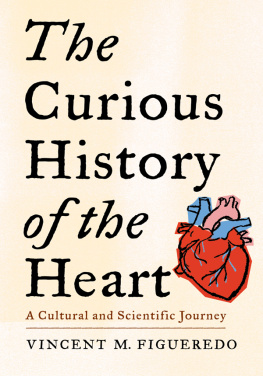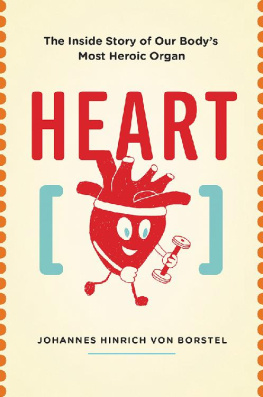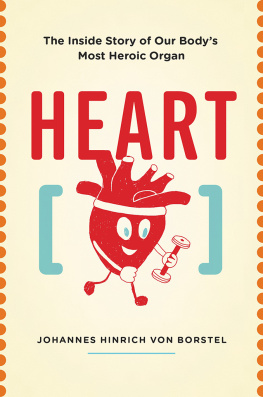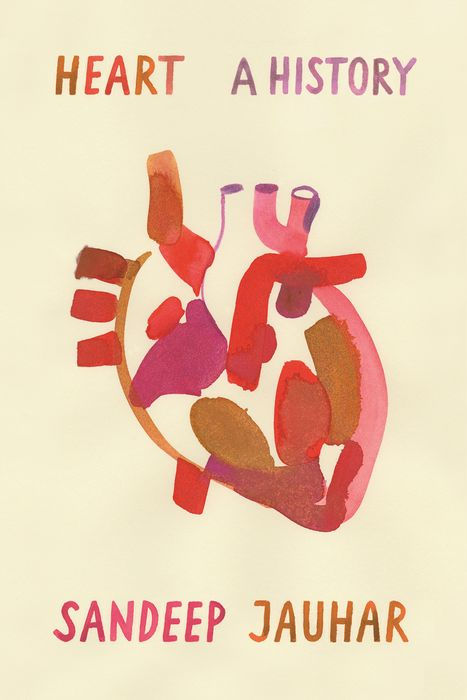
The author and publisher have provided this e-book to you for your personal use only. You may not make this e-book publicly available in any way. Copyright infringement is against the law. If you believe the copy of this e-book you are reading infringes on the authors copyright, please notify the publisher at: us.macmillanusa.com/piracy.
For Pia, my heart
The animating spark of the body, nurse of its life, the creative principle and harmonizing bond of the senses; the central link in the human structure mainstay of our nature, king, governor, creator.
Bernard Silvester, twelfth-century poet and philosopher
Id been getting short of breath. When I walked up the scuffed steps to my fourth-floor office, I had to stop to rest. Sometimes, at night, I would start to wheeze as my airways congested with mucus, and Id break into fits of cough. As a physician, I was privileged to have been a first responder on 9/11, but many of us who had been at Ground Zero were reporting respiratory problems. So I went to my friend Seth, a pulmonologist, for an evaluation. He ordered pulmonary function tests, in which I sat in a glass-walled booth and blew hard into a plastic tube. Airflow and lung volumes were normal. Seth diagnosed me with acid reflux, a common cause of chronic cough, and prescribed a daily antacid. But I persuaded him to order a CT scan of my chest. My symptoms seemed out of proportion to his benign diagnosis. I was worried that my lungs had been damaged by the smoke and dust Id inhaled downtown.
As Seth predicted, the CT scan revealed normal lungs. However, an incidental finding caught my eye. Coronary artery calcifications are noted, the report offhandedly stated. Coronary calcium is a marker of atherosclerosis, hardening of the arteries. It had been reported as an incidental finding on countless CT scans of my older patients over the years, and Id scarcely paid any attention. But now, at age forty-five, I wanted to know more. How much calcium was present, and where, exactly? A radiologist informed me that the scan Id had did not have the resolution to answer these questions.
On my computer, I pulled up a Framingham calculator, a tool designed to estimate ones risk of a heart attack within the next ten years. I put in my height and weight, blood pressure and cholesterol, and the fact that I am a nonsmoker and dont have diabetes. The program spit out a ten-year risk of a heart attack of 2 percent and of any cardiovascular event (including angina and stroke) of about 7 percent. Reassuringly low. However, I also knew that for an Indian immigrant with a strong family history of heart disease, the calculation probably underestimated the true risk.
My brother, Rajiv, also a cardiologist, suggested a treadmill stress test, but I was playing tennis on weekends without any symptoms. A stress test would only detect coronary blockages greater than 70 percent, and I was pretty sure my disease was not that advanced. So I opted for a special, noninvasive CT angiogram to look into my coronaries. Every Fathers Day I received spam e-mail about this test. Make sure Dad is not among the hundreds of thousands of men in America who appear healthy but are actually a ticking time bomb. Strange to think that I might now be one of those men. I called Dr. Trost, the cardiac radiologist in our department, and scheduled the scan. She reassured me that I was at low risk for heart disease. But for your peace of mind, you should probably have it, she said.
So, early one morning in June, I went for the test. While I lay on the gantry outside the C-shaped scanner, a tech inserted an IV in the back of my hand. The scan would have to resolve millimeter-sized plaque in a grapefruit-sized organ moving at a velocity of 200 millimeters per second. I was given an intravenous beta-blocker to slow down my heart to reduce image blur. A nitroglycerin tablet was also placed under my tongue to dilate my chest arteries so the scan could visualize them better. After a couple of preliminary images, a nurse injected X-ray-opaque dye into my vein. Youre going to feel warm all over, she said as I blushed, thinking I had wet myself. The final run-through took less than a minute.
After Dr. Trost reviewed the images, she called me into the reading room. The gray-and-white pictures were up on a large monitor. White specks, radiographic grit, were in all three of my coronary vessels. The main artery feeding my heart had a 30 to 50 percent obstruction near the opening and a 50 percent blockage in the midportion. There was minor plaque in the other two arteries, too. Sitting numbly in that dark room, I felt as if I were getting a glimpse of how I was probably going to die.

Fear Heart (Courtesy of Darian Barr)
Introduction:
The Engine of Life
There is nothing shameful about a heart attack.
Susan Sontag, Illness as Metaphor (1978)
Perhaps the most consequential event in my life occurred fifteen years before I was born. On a sweltering July day in India in 1953, my paternal grandfather died suddenly. He was only fifty-seven. The circumstances were unusual, and like most family tragedies, ours has acquired a touch of myth. Everyone agrees that in the morning on the day he died, my grandfather was bitten by a snake coiled between sacks of grain in his little shop in Kanpur. He did not see the type of serpent, but snakebite is common in India, and by all accounts my grandfather was feeling fine when he came home for lunch. My father, who was almost fourteen, was going for an interview at Kanpur Agricultural College the following day, and my grandfather had planned to accompany him. They were sitting on the stone floor, inspecting my fathers high school diploma, delighting in all the academic honors hed received, when, midway through the meal, neighbors brought in the corpse of the shiny black cobra they claimed had bitten my grandfather. (It had been killed by a snake charmer summoned to the shop.) My grandfather took one look at it and went pale. How can I survive this? he said, before slumping to the floor. The neighbors exhorted him to say Ram, Ram, a Hindu prayer, but his last words, lying on the floor, his eyes turning to glass, were I wanted to take Prem to college.
A government ambulance used to make rounds in the village regularly. Around 7:00 p.m., several hours after my grandfathers collapse, it was flagged down on a routine drive. By then, rigor mortis had set in, traveling like a slow wave from my grandfathers neck and jaw into his limbs. The paramedics immediately declared my grandfather had passedhe had no heartbeatbut the family, in denial, insisted they take him (and the snake) to a British-built hospital about five miles away. A doctor there pronounced my grandfather dead on arrival.
It was a heart attack, the doctor said, dispelling the familys belief that a snake had killed their elder. My grandfather had succumbed to the most common cause of death throughout the world, sudden cardiac death after a myocardial infarction, or heart attack, perhaps triggered in his case by fright over the snakebite. With nothing to be done, and the summer heat threatening to spoil the body, my grandfather was brought back to the village and cremated the following day. Before a garlanded casket set on a pyre soaked in oil, people beat their heads in grief under a light blue sky.
Listening to family lore, I grew up with a fear of the heart as the executioner of men in the prime of their lives. Because of the heart, you could be healthy and still die; it seemed like such a cheat. The apprehension was fed by our grandmother, who came to live with us in California in the early 1980s (until she got homesick and returned to the tiny village in Kanpur where her beloved husband had died). Even thirty years after his death, she still wrapped herself in white gossamer shawls that smelled of mothballs, befitting a widow. Once, at the Los Angeles Zoo, she bowed respectfully to the snake they brought around, clasping her hands and muttering a prayer before insisting we take her home. She was a strong-willed woman who ably took over the reins of the household after her husband died. And yet, like Miss Havisham, she spent her life in mourning over one freakish, incomprehensible incident. In India, snakes symbolize infinity and timelessness, as well as misfortune and death. To the end, in her mind, it was a venomous snake that killed her husband. And in a way, in the suddenness with which a heart attack can fell a healthy and vibrant life without warning, it was.







